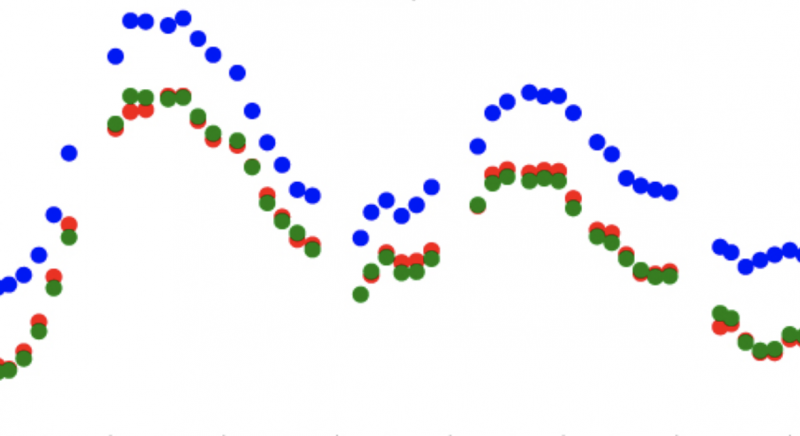ALMA spots the twinkling heart of our Milky Way
EarthSky in SPACE | May 26, 2020
Astronomers used the ALMA telescope in Chile to observe irregular flickers in millimeter-waves from the center of our Milky Way galaxy: the twinkling heart of the galaxy.Astronomers using the ALMA telescope in Chile’s Atacama Desert have now tracked quasi-periodic (irregular) flickers in millimeter-waves emanating from the center of our Milky Way galaxy.

This image shows the flickering or twinkling heart of our Milky Way galaxy. These dots represent measurements of changes in the intensity of emission, at millimeter wavelengths, from the galaxy’s center. The changes were detected by the ALMA telescope in Chile. The colossal black hole at the galaxy’s center is called Sagittarius A* (pronounced Sagittarius A-Star). |
Astronomers using the ALMA telescope in Chile’s Atacama Desert have now tracked quasi-periodic (irregular) flickers in millimeter-waves emanating from the center of our Milky Way galaxy.
They've interpreted the flickering as coming from spots of radio emission in a disk encircling the 4-million-solar-mass black hole at our Milky Way’s heart. The black hole is known as Sagittarius (Sgr) A* (pronounced Sagittarius A-Star). The radio spots appear to orbit the black hole closer than Mercury orbits our sun. Keio University graduate student Yuhei Iwata is lead author of the paper, published April 2, 2020, in the peer-reviewed Astrophysical Journal Letters. Iwata said in a May 22 statement from ALMA:
It has been known that Sgr A* sometimes flares up in millimeter wavelength. This time, using ALMA, we obtained high-quality data of radio-wave intensity variation of Sgr A* for 10 days, 70 minutes per day. Then we found two trends: quasi-periodic variations with a typical time scale of 30 minutes and hour-long slow variations.
The result is interesting not only because it’s a direct measurement of the flickering, or twinkling, radiation at the heart of the Milky Way, but also because, the astronomers believe, the observations are linked to the way space-time behaves in the extreme gravity environment surrounding a black hole.














 Reply With Quote
Reply With Quote